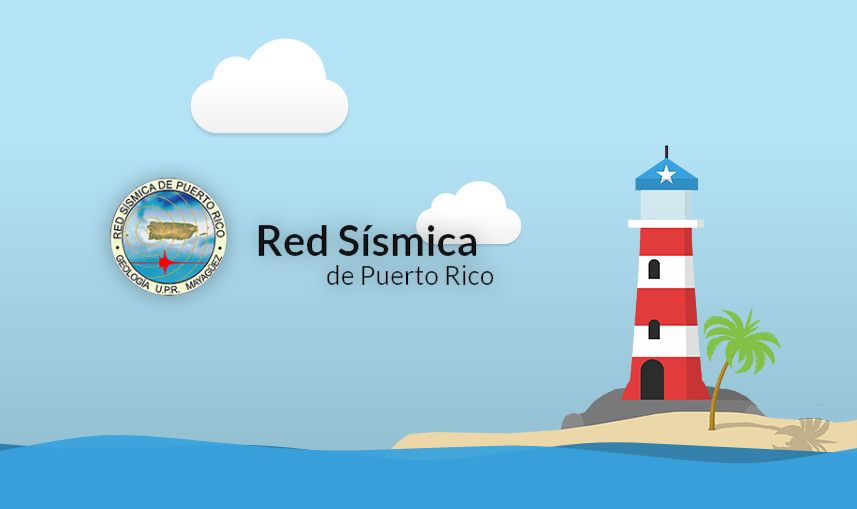The Red Sísmica de Puerto Rico monitors seismic activity in Puerto Rico and the surrounding region. It provides real-time earthquake data and educational resources.
The Red Sísmica de Puerto Rico plays a crucial role in ensuring the safety and preparedness of the island’s residents. By continuously monitoring seismic activity, it offers vital real-time data on earthquakes. This information helps in understanding seismic patterns and potential risks.
The organization also educates the public about earthquake preparedness and response. Through workshops, drills, and informative materials, it empowers communities to take proactive measures. The Red Sísmica de Puerto Rico collaborates with various agencies to enhance earthquake preparedness and response strategies. This commitment to public safety underscores its importance in the region.
History Of Seismic Activity
The Red Sísmica De Puerto Rico (Puerto Rico Seismic Network) is crucial for monitoring and studying earthquakes in Puerto Rico. Understanding the island’s seismic history is vital for residents and researchers. This history helps predict future earthquakes and prepare for them.
Notable Earthquakes
Puerto Rico has experienced several significant earthquakes throughout its history. These events have shaped the island’s infrastructure and its residents’ lives. Here are some of the most notable ones:
- 1918 San Fermín Earthquake: This was a powerful earthquake with a magnitude of 7.3. It caused a tsunami and led to significant damage, including the destruction of buildings and loss of lives.
- 1943 Northern Puerto Rico Earthquake: With a magnitude of 7.7, this earthquake struck the northern part of the island. It caused landslides and structural damage, affecting many communities.
- 2020 Southwestern Puerto Rico Earthquake: This recent earthquake had a magnitude of 6.4. It caused extensive damage to homes, schools, and infrastructure. Thousands of residents were displaced, highlighting the island’s vulnerability.
These earthquakes underscore the importance of the Red Sísmica De Puerto Rico. The network helps in monitoring seismic activities and providing early warnings.
Impact On Puerto Rico
Earthquakes have a profound impact on Puerto Rico. They affect the island’s economy, infrastructure, and daily life. Here are some of the key impacts:
- Economic Impact: Earthquakes cause significant economic losses. The cost of rebuilding damaged structures and infrastructure is immense. Businesses also suffer, leading to economic downturns.
- Infrastructure Damage: Major earthquakes damage buildings, roads, and bridges. This disrupts transportation and communication, making recovery efforts challenging.
- Human Impact: Earthquakes lead to loss of lives and displacement of people. Many residents lose their homes and are forced to live in temporary shelters.
To illustrate the impact, here is a table showing the effects of the 2020 earthquake:
| Aspect | Impact |
|---|---|
| Magnitude | 6.4 |
| Displaced Residents | 8,000+ |
| Damaged Schools | 500+ |
| Economic Loss | $3.1 billion |
The Red Sísmica De Puerto Rico plays a crucial role in mitigating these impacts. Its efforts in monitoring and early warnings are vital for the island’s safety and preparedness.
Red Sísmica De Puerto Rico
Red Sísmica de Puerto Rico plays a crucial role in monitoring seismic activity across the island. This network is essential for understanding and mitigating the risks posed by earthquakes. Puerto Rico’s location on a tectonic plate boundary makes it prone to seismic events. The Red Sísmica de Puerto Rico provides valuable data that helps protect lives and property.
Establishment And Purpose
The Red Sísmica de Puerto Rico was established to monitor and study seismic activity. This network was created in response to the island’s vulnerability to earthquakes. Puerto Rico lies near the boundary between the North American and Caribbean tectonic plates.
The primary purpose of the Red Sísmica de Puerto Rico includes:
- Collecting seismic data to understand earthquake patterns.
- Providing real-time information to emergency services.
- Enhancing public awareness about earthquake risks.
With a dedicated team of scientists and technicians, the network operates 24/7. They ensure the data collected is accurate and reliable. This data is crucial for developing building codes and safety measures.
Here’s a brief overview of the establishment timeline:
| Year | Event |
|---|---|
| 1987 | Red Sísmica de Puerto Rico was officially established. |
| 1990 | First seismic stations were installed across the island. |
| 2004 | Network expanded to include more advanced technology. |
Monitoring Network
The monitoring network of the Red Sísmica de Puerto Rico consists of numerous seismic stations. These stations are strategically placed across the island to capture seismic data. Each station is equipped with state-of-the-art sensors and communication systems.
Key features of the monitoring network include:
- Seismometers that detect ground movements.
- GPS stations that measure tectonic plate movements.
- Real-time data transmission to the central monitoring facility.
These stations provide continuous data, which is analyzed by experts. The data helps in predicting potential seismic events. This information is also crucial for issuing timely warnings to the public.
The network’s efficiency can be summarized as follows:
| Station Type | Function |
|---|---|
| Seismometer | Detects ground vibrations. |
| GPS Station | Measures tectonic shifts. |
| Communication Hub | Transmits data in real-time. |
With this robust network, the Red Sísmica de Puerto Rico plays a vital role in safeguarding the island’s residents.
Role In Disaster Preparedness
The Red Sísmica De Puerto Rico plays a crucial role in ensuring the safety and preparedness of the region during disasters. This seismic network is dedicated to monitoring and analyzing seismic activities, providing early warnings, and engaging with the community to build a culture of preparedness. Its efforts are vital in minimizing the impact of natural disasters on the island.
Early Warning Systems
The early warning systems implemented by the Red Sísmica De Puerto Rico are essential for disaster preparedness. These systems detect seismic activities and provide timely alerts to the public and authorities. Early warnings can save lives by giving people time to take protective actions.
Key features of the early warning systems include:
- Real-time Monitoring: Constant surveillance of seismic activities.
- Automated Alerts: Immediate notifications to residents and officials.
- Multi-Channel Communication: Alerts sent via SMS, email, and social media.
Here is a table summarizing the benefits of the early warning systems:
| Feature | Benefit |
|---|---|
| Real-time Monitoring | Immediate detection of seismic activities |
| Automated Alerts | Quick dissemination of warnings |
| Multi-Channel Communication | Reaches a wide audience swiftly |
These systems are constantly being improved to ensure maximum efficiency. The goal is to reduce the potential damage and casualties associated with earthquakes and other natural disasters.
Community Engagement
Community engagement is another critical aspect of the Red Sísmica De Puerto Rico’s role in disaster preparedness. Educating the public about seismic risks and preparedness measures is essential for building a resilient community.
Activities and initiatives include:
- Public Awareness Campaigns: Informing residents about earthquake safety.
- School Programs: Teaching children how to stay safe during a disaster.
- Workshops and Drills: Conducting practical exercises for emergency situations.
These efforts ensure that everyone, from children to adults, knows how to respond during an earthquake. The Red Sísmica De Puerto Rico collaborates with local schools, businesses, and community organizations to spread this vital knowledge.
Engaging with the community also involves listening to their concerns and feedback. This two-way communication helps improve the effectiveness of disaster preparedness strategies. The goal is to create a well-informed and prepared population capable of minimizing the impact of seismic events.

Credit: www.orlandosentinel.com
Challenges And Limitations
The Red Sísmica De Puerto Rico is vital for monitoring and studying seismic activity in Puerto Rico. Despite its importance, it faces many challenges and limitations. Understanding these challenges helps us appreciate the effort required to maintain this crucial system.
Funding Constraints
Funding is a significant challenge for the Red Sísmica De Puerto Rico. Limited financial resources hinder various aspects of its operations. Obtaining sufficient funds is critical for maintaining and upgrading equipment. Without adequate funding, the system struggles to keep up with technological advancements.
Key funding issues include:
- Maintenance: Regular maintenance is crucial for accurate data collection. Insufficient funds can lead to equipment failure.
- Upgrades: Technology evolves rapidly. Limited funds restrict the ability to upgrade to the latest technologies.
- Staff Salaries: Skilled professionals are essential. Limited budgets may result in staff shortages or inability to hire experts.
Impact of funding constraints can be summarized as:
| Area | Impact |
|---|---|
| Equipment Maintenance | Reduced accuracy and reliability |
| Technology Upgrades | Outdated systems and software |
| Staffing | Fewer skilled professionals |
Technological Constraints
Technological limitations also pose a significant challenge. Outdated equipment can hinder the ability to detect and analyze seismic activity accurately. Keeping up with rapid technological advancements is essential but challenging.
Specific technological constraints include:
- Old Sensors: Many sensors are outdated, affecting data accuracy.
- Limited Data Storage: Storing large volumes of data requires advanced systems. Limited storage capacity hampers effective data management.
- Data Transmission: Efficient data transmission is critical. Outdated networks can delay data sharing and analysis.
Addressing these constraints requires:
- Investing in modern sensors and equipment.
- Upgrading data storage and management systems.
- Enhancing data transmission networks.
Technological constraints impact the overall effectiveness of the Red Sísmica De Puerto Rico. It is essential to address these issues to ensure reliable seismic monitoring.
International Collaboration
The Red Sísmica De Puerto Rico plays a crucial role in monitoring and studying seismic activity in the Caribbean region. International collaboration enhances its capabilities and extends its reach. By working with global partners, the network ensures better data collection and analysis. This collaborative approach helps mitigate earthquake impacts, protecting lives and infrastructure.
Partnerships With Other Seismic Networks
The Red Sísmica De Puerto Rico actively partners with other seismic networks worldwide. These partnerships facilitate the sharing of crucial seismic data. This collaboration includes:
- Data Exchange: Sharing real-time seismic data with networks in the United States, Japan, and Europe.
- Joint Research Projects: Collaborating on projects to study seismic patterns and predict earthquakes.
- Technical Support: Providing and receiving technical assistance to enhance monitoring systems.
These partnerships result in a more comprehensive understanding of seismic activities. The combined data from various networks allows for more accurate predictions. This helps in issuing timely warnings and minimizing damage.
Knowledge Sharing Initiatives
The Red Sísmica De Puerto Rico emphasizes knowledge sharing to improve global earthquake preparedness. It participates in various initiatives to disseminate information:
- Workshops and Conferences: Hosting and attending international events to share findings and advancements.
- Educational Programs: Offering training sessions for scientists, engineers, and emergency responders.
- Public Awareness Campaigns: Educating the public about earthquake safety and preparedness.
These initiatives foster a global community of well-informed professionals and citizens. The shared knowledge helps in developing better strategies to handle seismic events. This, in turn, enhances the resilience of communities worldwide against earthquakes.

Credit: redsismica.uprm.edu
Future Developments
The Red Sísmica De Puerto Rico is a vital network for tracking seismic activity on the island. Its goal is to improve earthquake preparedness and safety. Exciting future developments are on the horizon. These developments focus on enhancing technology and expanding monitoring capabilities.
Enhancements In Technology
Future developments in the Red Sísmica De Puerto Rico will see significant enhancements in technology. These upgrades will improve the accuracy and speed of seismic data collection. Here are some key areas of technological advancements:
- Advanced Sensors: New sensors will detect smaller tremors and provide faster alerts.
- Real-time Data Transmission: Improved satellite and internet connectivity will ensure real-time data transfer.
- AI Integration: Artificial intelligence will analyze seismic data for quicker and more accurate predictions.
These enhancements will help in the early detection of earthquakes. Faster alerts mean quicker evacuation and better safety measures. The use of AI will also allow for better pattern recognition, which will help in predicting potential seismic events.
Here is a table summarizing the key technological enhancements:
| Technology | Benefits |
|---|---|
| Advanced Sensors | Detect smaller tremors, faster alerts |
| Real-time Data Transmission | Faster data transfer, real-time updates |
| AI Integration | Quick predictions, better pattern recognition |
Expansion Of Monitoring Capabilities
The Red Sísmica De Puerto Rico is also planning an expansion of monitoring capabilities. This will cover more areas and provide a broader understanding of seismic activity. Some of the key expansions include:
- More Monitoring Stations: Increasing the number of stations across the island.
- Underwater Sensors: Installing sensors in the ocean to monitor underwater seismic activity.
- Community Involvement: Engaging local communities in data collection and awareness programs.
With more monitoring stations, the network will cover areas that were previously unmonitored. Underwater sensors will help in detecting earthquakes that originate offshore. Engaging local communities will ensure that people are better prepared and informed.
Here is a list of the planned expansions:
- Increase the number of monitoring stations.
- Install underwater sensors in the ocean.
- Engage local communities in data collection.
These expansions will make the Red Sísmica De Puerto Rico a more robust and comprehensive system. This will greatly enhance the island’s ability to prepare for and respond to earthquakes.

Credit: www.facebook.com
Frequently Asked Questions
What Is Red Sísmica De Puerto Rico?
The Red Sísmica De Puerto Rico is a seismic network. It monitors earthquake activity in Puerto Rico and surrounding regions.
How Does Red Sísmica Monitor Earthquakes?
Red Sísmica uses seismographs and sensors. They detect ground movements and analyze seismic data to monitor earthquakes.
Where Is Red Sísmica De Puerto Rico Located?
Red Sísmica De Puerto Rico is based at the University of Puerto Rico. It operates from the Mayagüez Campus.
Why Is Red Sísmica Important?
Red Sísmica provides crucial earthquake information. It helps in disaster preparedness and public safety by monitoring seismic activity.
Conclusion
The Red Sísmica De Puerto Rico plays a crucial role in monitoring seismic activities. It ensures the safety and preparedness of residents. Stay informed and connected with the latest updates from this vital network. Understanding seismic activity is key to safeguarding lives and property.
Thank you for reading and staying informed.




